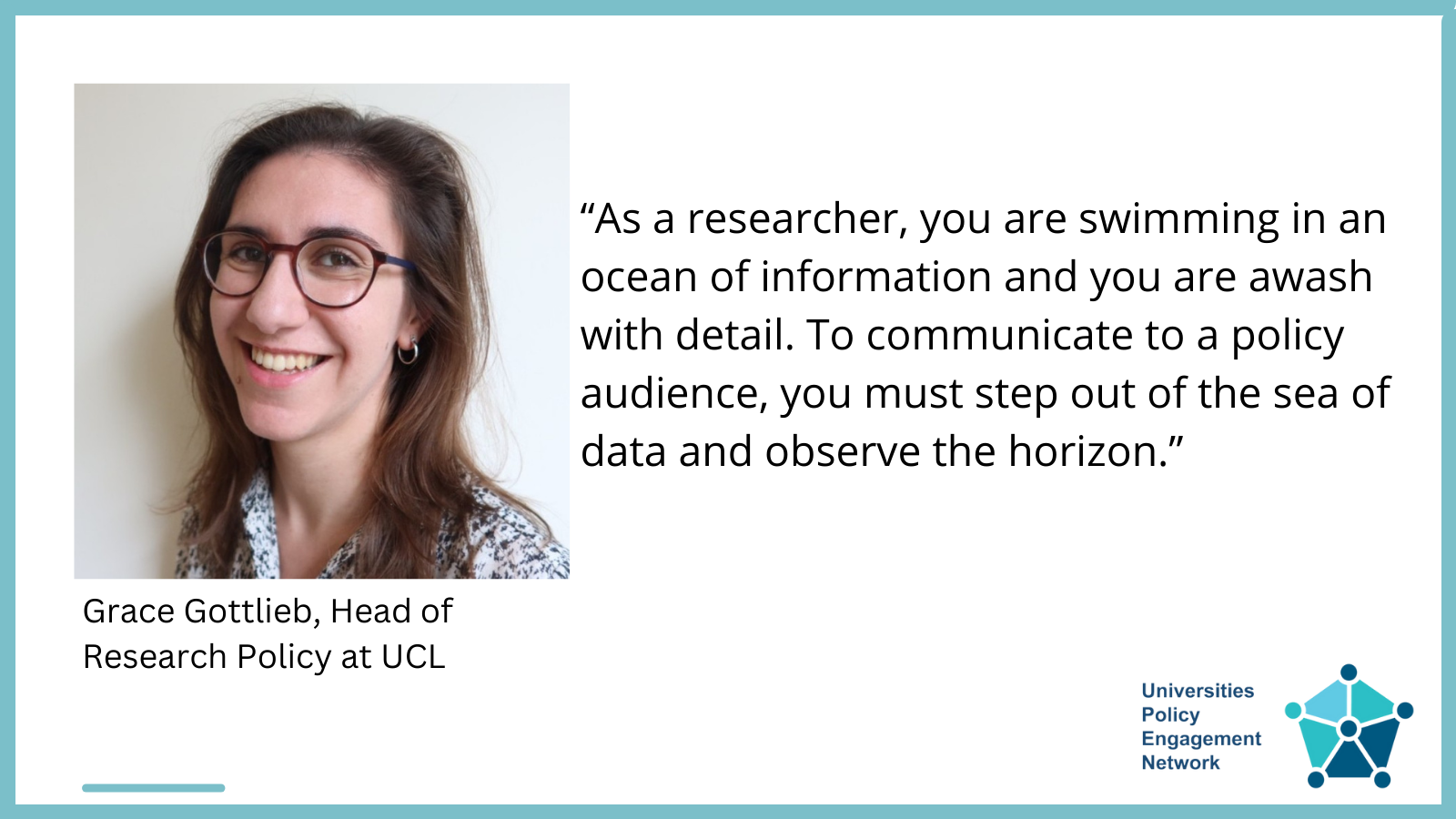Public speaking for a policy audience: Put yourself in the policymaker’s shoes

This blog is from a UPEN and Future Leader Fellow Development Network Masterclass on Public Speaking for a Policy Audience, led by Delia Lloyd, from RealDelia Communications.
Imagine you have secured an opportunity to give a talk on your research to a group of influential policymakers. You’ve been working hard to build relationships with policymakers and finally have the opportunity you’ve been striving towards – congratulations! You feel ready to share your expertise and have an impact on policy. Now’s your moment. There’s just one issue: you’ve only presented your research to an academic audience before. And you have a sneaking suspicion an academic talk won’t cut the mustard. You know you have to change your approach, but you’re not sure how. What do you do?
The answer is a deceptively simple piece of advice many of us heard as squabbling children: put yourself in the other person’s shoes – in this case, the policymaker’s shoes. Consider the following questions: 1) What are your aims for the interaction? 2) Who is your audience? 3) What are the key messages you want them to take away?
Easy, right? In theory, yes. But in practice, when you know (and love) your research topic inside out, it can be difficult to climb out of your own head and repackage your knowledge for someone else.
So in a recent masterclass on public speaking for a policy audience, communications consultant Delia Lloyd took us on a whirlwind tour of those three questions, breaking them down into actionable advice to turn research insights into an impactful talk for policymakers. Read on for all the answers you’ve been waiting for…
1. What are your aims?
Envisage your audience listening to your talk. What do you want them to think, feel and do?
As a researcher, you are likely to have an idea of what you want them to think, and you may already have specific asks for them to put into action. But how do you want them to feel? Inspired? Empathetic? Motivated?
With any talk, there is a risk of boredom, distraction and impatience. But when you identify your aims at the start, your communication will cut through with a clarity that earns your audience’s focus.
2. Who is your audience?
Consider your audience as multifaceted human beings, rather than just as individuals working in specific roles. How they receive your talk is inevitably influenced by their background and context – fail to factor this in at your peril. Delia breaks this down into four areas: their level of knowledge, demographics, prior context and values.
Do your research. How well informed are they on this topic already? What life experience do they have and what do they care about? What pressures are they under? Is their boss breathing down their neck? Consider whether they are likely to be receptive to your message or resistant. What angle might connect with them most effectively?
Ultimately you must reflect on what’s in it for them. If you can give them information or analysis that addresses a gap or need in their world, you are much more likely to make traction. Get creative and transform your connection with them from an obligation into an opportunity they value.
3. What are your key messages?
Crystal clear messaging plays an essential role here. As a researcher, you are swimming in an ocean of information and you are awash with detail. To communicate to a policy audience, you must step out of the sea of data and observe the horizon.
Firstly, Delia recommends identifying your ‘through line’: What is the core message that underpins all of your points? When an audience member is asked afterwards by a colleague, “What was the main message of the talk?”, what do you want them to say? Convey this message from the start.
Secondly, identify your three key points. These should aligned with, but not the same as, your through line. Make sure the three points are distinct from each other and arrange them in a logical order.
I know what you’re thinking: three key points? What about the 57 other points essential to my argument? I agree those 57 are key. Key to your next research paper. But a great paper does not make a great talk. There is limited real estate on sale in the brains of your audience, and plenty of enthusiastic people like you are vying to make a purchase. So prioritise your points and thou shalt conquer.
There you have it, these are the secrets of public speaking for a policy audience. You are now ready. Go forth and make the most of your moment. And if you remember one thing, let it be this: put yourself in the policymaker’s shoes. Looking through the lens of your audience will bring your messages into focus for them.










































































































